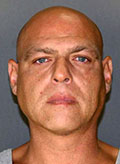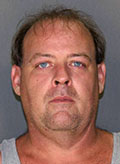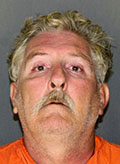Task force members have been asked to consider five options for the future headquarters of the Batavia Police Department. At Tuesday's meeting, none of those sites appeared to be entirely satisfactory and members asked consultants to give them data on two more locations.
Committee members are interested in taking a closer look at potential locations in the parking lot between Bank Street and City Centre and at the former Wiard Plow factory location on Swan Street.
A chief advantage of both locations is they are outside the floodplain, which means construction costs could be at least $1 million cheaper, and perhaps $1.5 million cheaper.
The discussion of the alternate locations arose after consultants went through a spreadsheet of potential costs of the original five options.
The five options and their potential costs:
-
56 Ellicott St. -- $11,380,844
-
96-98 Jackson St. -- $11,877,839
-
26 Evans St. -- $11,710,712
-
165 Park Road (co-located with the Sheriff's Office) -- $10,095,565
-
Current location remodelled, option 1 -- $16,358,596
-
Current location, remodelled, option 2 -- $11,622,954
Among the biggest variables in cost are associated with elevating locations within the floodplain (the top three locations) and mitigating for potential flooding.
The first two locations have higher costs associated with environmental testing, too.
City Manager Jason Molino also presented the committee with information on potential grants and an overview of debt service and municipal bonds.
If the city took on debt for $11 million, the debt service over a 30-year term would be $600,000, which is within the city's current debt load capacity.
The city is building a capital reserve fund to help pay for projects such as this, and with the pursuit of financing at least two years away, the amount of cash on hand to help pay for the building will likely increase, reducing the amount of money that would need to be borrowed.
The city could reduce the amount paid in the early years of the financing agreement to as little as $100,000 annually through the use of what's known as bond anticipation notes. These interest-only notes can last as much as five years in lieu of issuing municipal bonds.
BANs would be helpful while the city pays down existing bonds before taking on a heavier debt.
Reducing debt and growing the capital reserve would help reduce the amount of bonds the city would need to sell in order to fully finance the project.
Committee member Marc Staley noted that a growing local economy would also help make a project like this easier for the city to handle financially and expressed some frustration with obstructionists who attempt to block the city's growth efforts.
"'The whole thing gets a lot more tenable with sales tax growth or growth in property assessments, but the whole thing gets swatted down by some," Staley said. "Like Jason said, you can't cut your way to prosperity. You can't develop a community unless you have a viable economic environment. It goes hand-in-hand with what we're trying to do."
The amount the city needs to finance could also be reduced by state and federal grants.
There's up to $1 million in potential grants available for projects such as this and Molino said further research may yield other grant opportunities.
The grants are competitive, which is why there is no guarantee the city will receive one for the project.
Among the advantages of the Alva Place and Swan Street alternate locations are they can include basements, which would help reduce costs and allow for some police functions to be more secure.
Chief Shawn Heubusch expressed some concern about the traffic volume on Bank Street if the location was in the City Centre parking lot, which would also reduce available parking in the area.
There was some talk of placing the building where a potential intersection of an extended Jackson Street could meet Alva Place. (Extending Jackson Street to the north has been proposed previously in other economic development discussions.)
Swan Street would provide patrols with easy access to both Ellicott Street and Main Street though the location would lack the public visibility of the other proposed locations. The three-acre parcel would provide the department plenty of room for potential expansion if the city grows, however.
The project consultants will work up a cost analysis for each location and present it to the committee at its meeting next month.
The committee is supposed to have its recommendation ready by July 1, but some committee members expressed concern there is still a lot of work to do. There may be a request later to extend the deadline.











